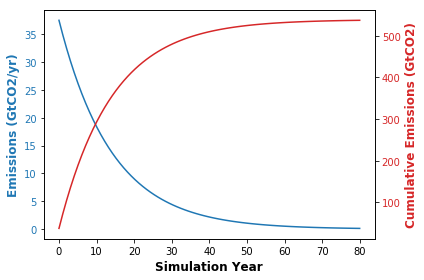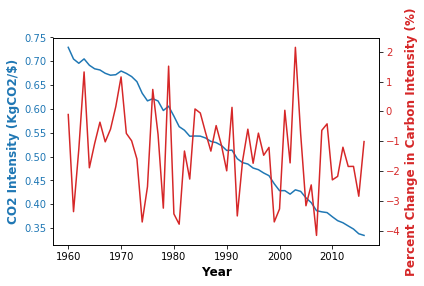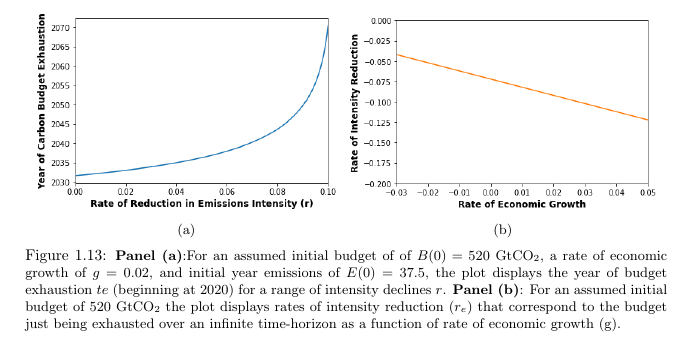Lets examine a simple scenario. Suppose we have initial emissions of 37.5 GtCO2, a carbon budget of 520 GtCO2, economic growth of 2\%. What percent must CO2 intensity of GDP decline year over year to stay within the budget (hint: its about 9%) and what does the pathway look like?
Of course this trajectory is sensitive to the assumption of the budget size. Here we see pathways and rates of intensity declines associated with various sizes of budgets.
What does the data say at the global level about decoupling rates? Well the rate is certainly less than the above.
Simple theoretical calculations illustrate the obvious that rates of intensity decline must be a lot higher than observed (these calculations do not, of course, indicate the mechanism by which such declines would occur). But they do give some sense of the magnitudes.
We can get these numbers from a hugely useful differential equation that relates remaining carbon budget (B) with initial emissions E(0) and the rates of economic growth (g) and intensity decline (r).
From this DE and solution we can compute several useful things. Like how long before a budget will be exhausted and what rate of decoupling is necessary given some assumptions about economic growth and emissions/budgets.
Now we can probably all imagine some mechanism that would act to lower CO2 emission (cough more renewables cough) but what about other stuff? Ultimately long term growth requires, to keep usage of other inputs/wastes constant, that intensities also decline by some mechanisms.
Now the numbers above are pretty huge in terms of declines in emissions and the associated intensity declines. Its not necessarily surprising in this context that many model assume large to enormous amount of negative emissions.

 Read on Twitter
Read on Twitter






